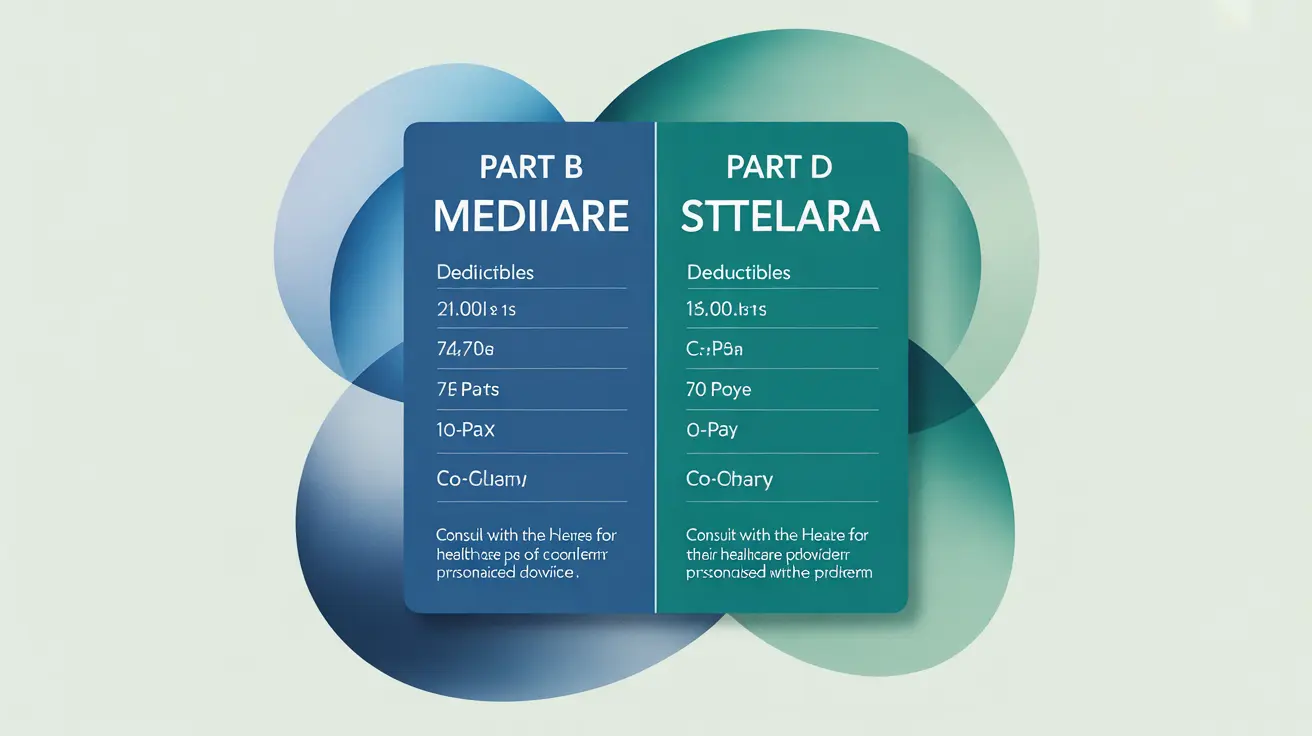For individuals managing conditions like psoriasis, psoriatic arthritis, or Crohn's disease, understanding how Medicare covers Stelara (ustekinumab) is crucial for accessing this important medication. The cost of Stelara on Medicare can vary significantly based on several factors, including your specific Medicare coverage and where you receive treatment.
Medicare Coverage Options for Stelara
Stelara coverage under Medicare typically falls under either Part B or Part D, depending on how and where you receive the medication. Understanding these differences is essential for managing your healthcare costs effectively.
Medicare Part B Coverage
Medicare Part B typically covers Stelara when it's administered in a doctor's office or outpatient facility. Under Part B, beneficiaries are generally responsible for 20% of the Medicare-approved amount after meeting their annual deductible. This can still result in significant out-of-pocket costs given Stelara's high price point.
Medicare Part D Coverage
When Stelara is self-administered at home, it falls under Medicare Part D prescription drug coverage. The cost under Part D can vary depending on your specific plan's formulary tier placement and whether you've reached different coverage phases throughout the year.
Understanding Your Out-of-Pocket Costs
The actual cost you'll pay for Stelara depends on several factors:
- Your specific Medicare plan type and coverage
- Whether you've met your deductible
- Which coverage phase you're in (for Part D)
- Any additional insurance coverage you may have
- Where you receive your treatment
Impact of the Medicare Part D Spending Cap
Starting in 2024, the Inflation Reduction Act implements a $2,000 annual out-of-pocket spending cap for Medicare Part D beneficiaries. This significant change can help make Stelara more affordable for many patients who previously faced much higher annual costs.
Financial Assistance Options
Several programs can help reduce your out-of-pocket costs for Stelara:
- Medicare Extra Help Program
- State Pharmaceutical Assistance Programs (SPAPs)
- Patient assistance programs through the manufacturer
- Non-profit foundation assistance
- Medicare Supplement Insurance (Medigap)
Alternative Treatment Options
For those concerned about Stelara's cost, discussing alternative treatments with your healthcare provider may be worthwhile. Some alternatives might include:
- Biosimilar medications (when available)
- Other biologics in the same class
- Different treatment approaches that may be more affordable
Frequently Asked Questions
How much does Stelara cost on Medicare, and what factors affect the price? The cost of Stelara on Medicare varies significantly based on your coverage type (Part B vs. Part D), whether you've met your deductible, and what coverage phase you're in. Under Part B, you typically pay 20% of the Medicare-approved amount. Under Part D, costs vary by plan and coverage phase.
What is the difference between Stelara coverage under Medicare Part D versus Part B? Medicare Part B covers Stelara when administered in a medical setting, with patients paying 20% after meeting their deductible. Part D covers self-administered Stelara, with costs varying based on the plan's formulary and coverage phase.
Are there any biosimilars or alternatives to Stelara covered by Medicare, and how do they compare in terms of cost? While specific biosimilars for Stelara are not currently available, other biologics in the same therapeutic class may be covered by Medicare. These alternatives might offer different pricing structures and could potentially be more affordable depending on your plan's coverage.
How does the $2,000 out-of-pocket spending cap for Medicare Part D affect prescription costs for Stelara? Starting in 2024, the new spending cap limits annual out-of-pocket costs to $2,000 for Medicare Part D beneficiaries. This can significantly reduce the financial burden for patients using Stelara, particularly those who previously exceeded this amount.
What financial assistance programs are available to help with high costs of Stelara under Medicare Part D? Multiple assistance options are available, including Medicare's Extra Help Program, State Pharmaceutical Assistance Programs, manufacturer patient assistance programs, non-profit foundation support, and supplemental insurance coverage through Medigap plans.




